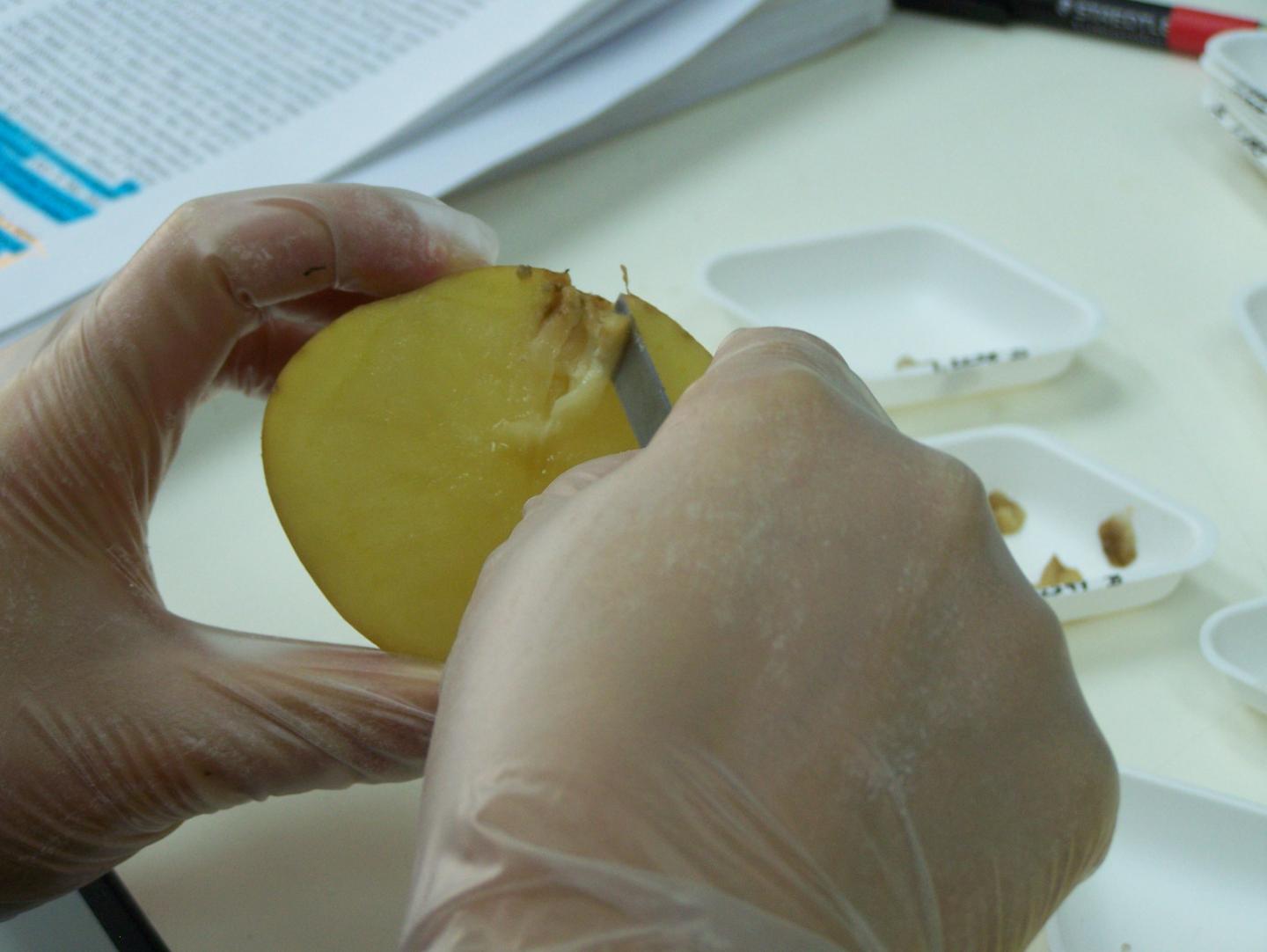
Credit: Rita Valente, IGC.
Bacteria "conversation" may be an early trigger for plant pathogens virulence, show scientists from Instituto Gulbenkian de Ciencia (IGC, Portugal). In a study published now in the open access journal mBio*, the research team led by Karina Xavier discovered that the virulence of pathogenic bacteria is precipitated in the presence of other pathogenic species that release chemical signals to the environment.
Karina Xavier's laboratory has been investigating how bacteria "talk" to each other in order to adjust their behaviour to environmental changes or presence of other species. "Bacteria use a 'language' made of small chemical molecules. When present in high numbers, bacteria start releasing these molecules, which will then be sensed by other bacteria, either from the same or different species. These molecules work as signals triggering bacterial behaviours that are only productive when bacteria are working together as a group boosting their virulence, for instance", explains Karina Xavier.
In this study, the IGC team focused on Pectobacterium wasabiae, a bacteria species included in an important group of plant pathogens. The virulence of these pathogens is characterised by the production of enzymes that degrade the cell wall of cells rooting plant tissue. The researchers were interested in understanding how this bacterium integrates different signals to regulate its virulence.
Using a genetic approach that enabled them to inhibit genes involved in the mechanism that induce virulence, the research team could observe what happened to the behaviour of this species. Typically, Pectobacterium wasabiae needs to be at a high density to produce the chemical molecules that will activate their virulence response. But now, the IGC team discovered that its virulence response could be triggered earlier, even at low densities, if these bacteria eavesdrop on signals released by other pathogenic species present in the environment.
Karina Xavier explains: "The molecules produced by different bacteria species in order to communicate to each other and to help them sense the status of their surroundings are the key players in the virulence response of bacteria. Blocking these signals and inhibiting the communication established between bacteria, is a strategy that needs to be further explored and taken into consideration to prevent pathogens' virulence".
###
This study was conducted in the IGC and funded by Fundacao para a Ciencia e a Tecnologia, and the Howard Hughes Medical Institute.
*Valente RS, Nadal-Jimenez P, Carvalho AFP, Vieira FJD, Xavier KB. 2017. Signal integration in quorum sensing enables cross-species induction of virulence in Pectobacterium wasabiae. mBio 8:e00398-17. https://doi.org/10.1128/mBio.00398-17
Media Contact
Ana Mena
[email protected]
351-214-407-959
@IGCiencia
http://www.igc.gulbenkian.pt
############
Story Source: Materials provided by Scienmag





